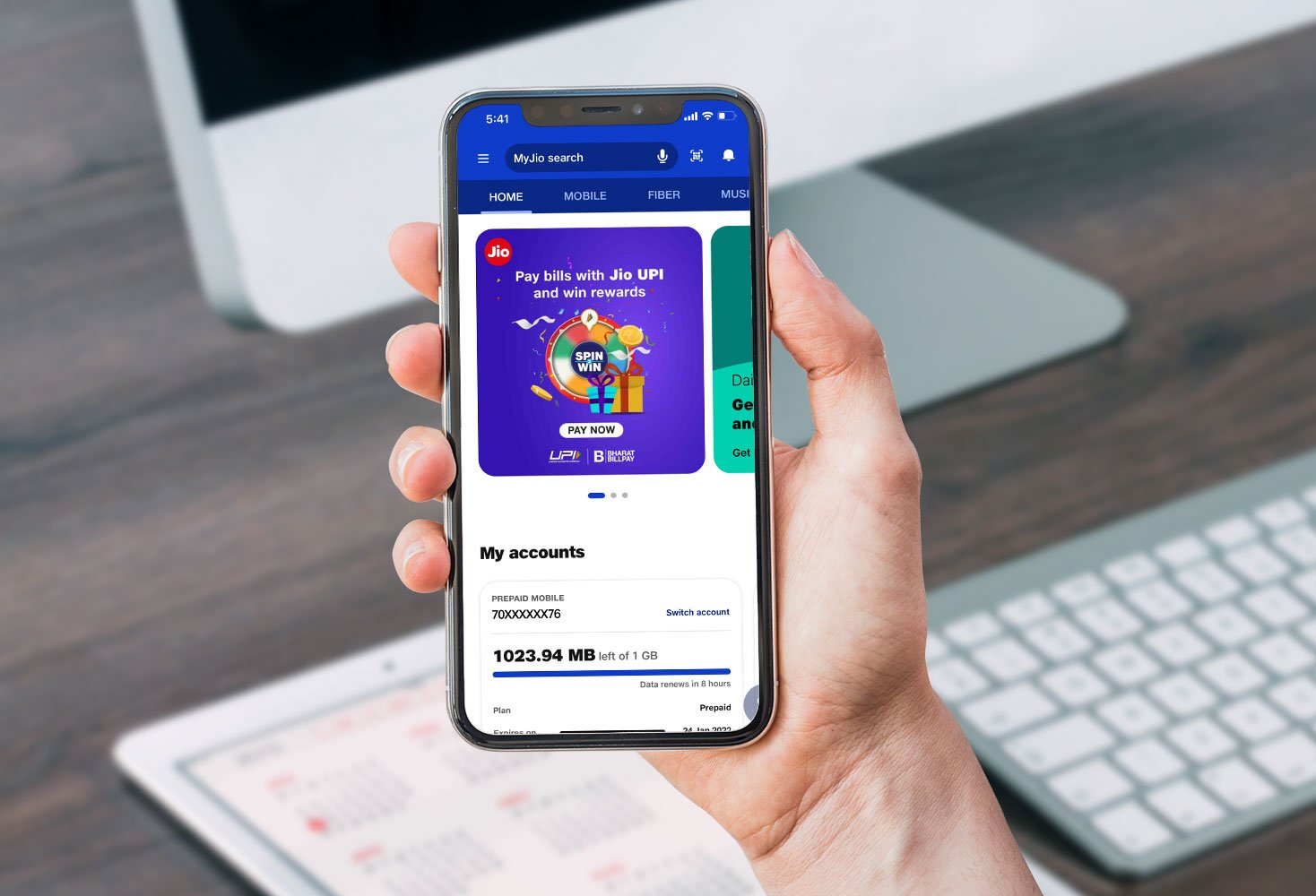
Starting a conversation
with Jio
OVERVIEW
I came in to work with AKQA on their newest and largest client, Jio, an Indian telecoms company with over 443.2 million users, as the UX Copywriter for the Design System Platform (DSP) and copywriter for MyJio. The platform would be the main source of truth about Jio’s products and a resource for employees and would provide training and support for the users of the Design System at Jio, a community of several hundred designers and developers).
CLIENT
AGENCY
INDUSTRY
Technology, B2B, D2C
SCOPE
Lead UX Writer
The Challenge
Project goals
Creating a product to delight customers and empowerJio customers throughout their journey.
Inspire, surprise, and delight Jio employees within the content design system.
Clearly onboard, inform, and educate Jio employees.
Define Jio’s tone of voice.
Identify any signs of employee (and customer) frustrations.
Research & Understanding
Alongside the product team, I worked to determine an approach, proceeding with a discovery phase through user testing and other research methods to understand the problems faced.
Employees
Employees need to feel supported at every step of their Jio journey, while customers reaching out to Jio for help were desperate to feel heard, not receive a robotic, cold response. Indian culture is warm and inviting, with families giving an incredibly warm reception to total strangers, which was something we wanted to emulate.
Customers
Jio had the opportunity to nurture and connect with 443 million users, and a whole ecosystem of incredible products. However, customers felt suspicious and hesitant; they did not trust Jio as a brand, while customers in the post-sign-up phase were not being nurtured.
Research methods
Our UXD team worked to determine an approach, proceeding with a discovery phase through different research methods to understand the problems.
Benchmarking
We looked at existing customer journeys, benchmarking for other design systems like Material.io, employee testimonials, and website traffic. Our goal was to identify any signs of employee (and customer) frustrations.
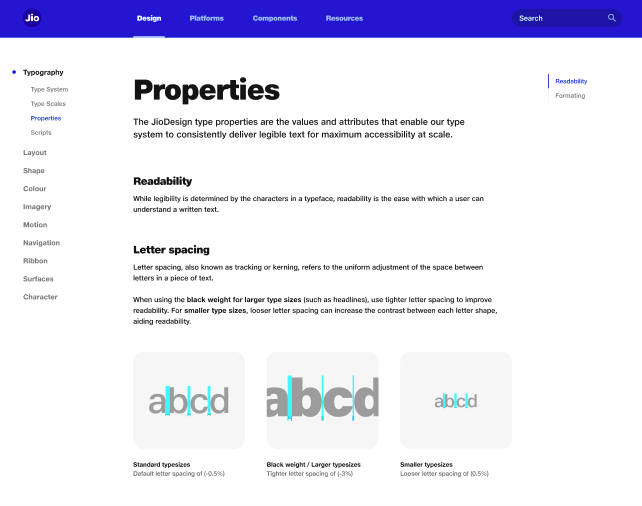
Explaining Jio's design guidelines
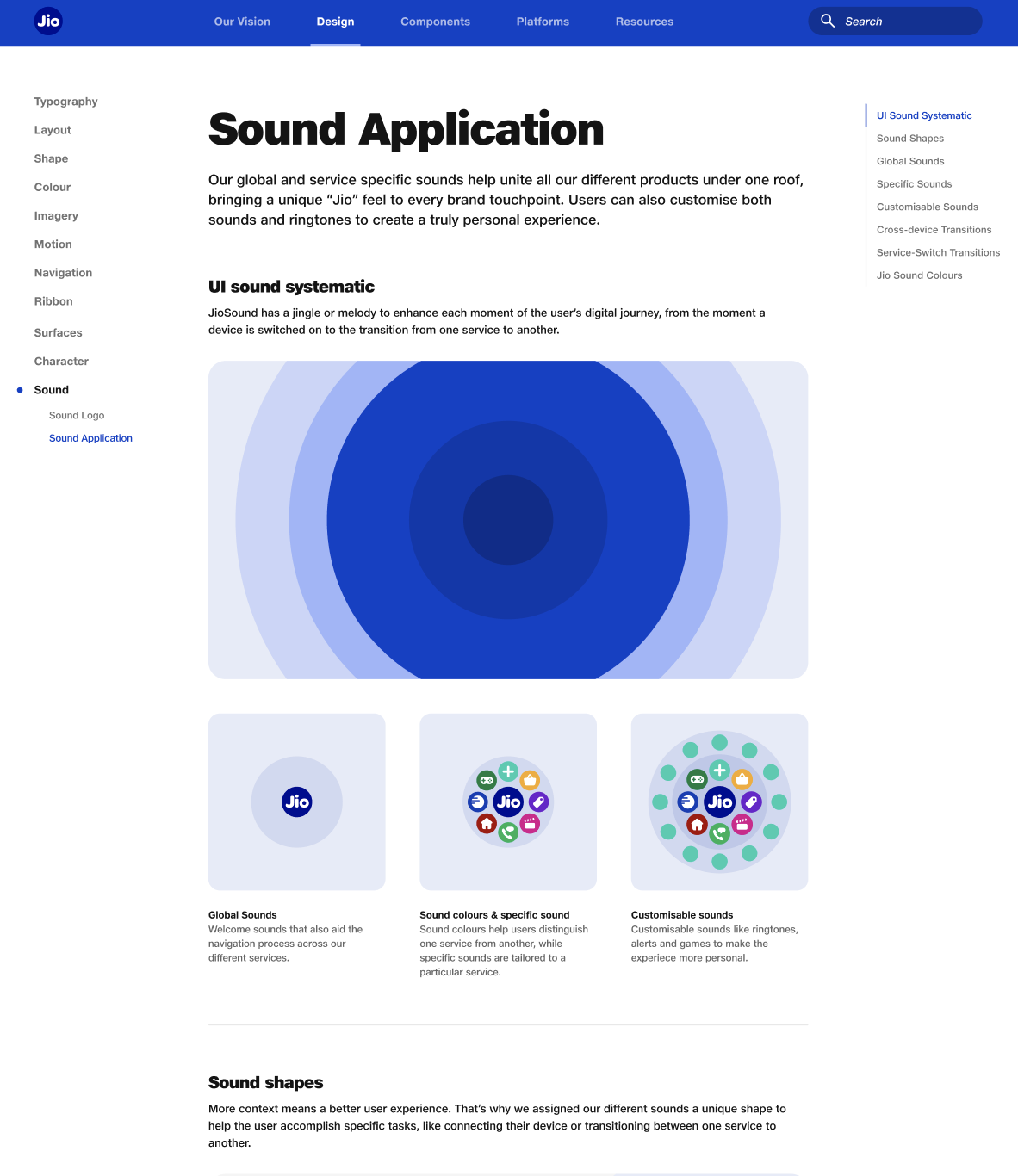
Example of content design layout in the design system platform
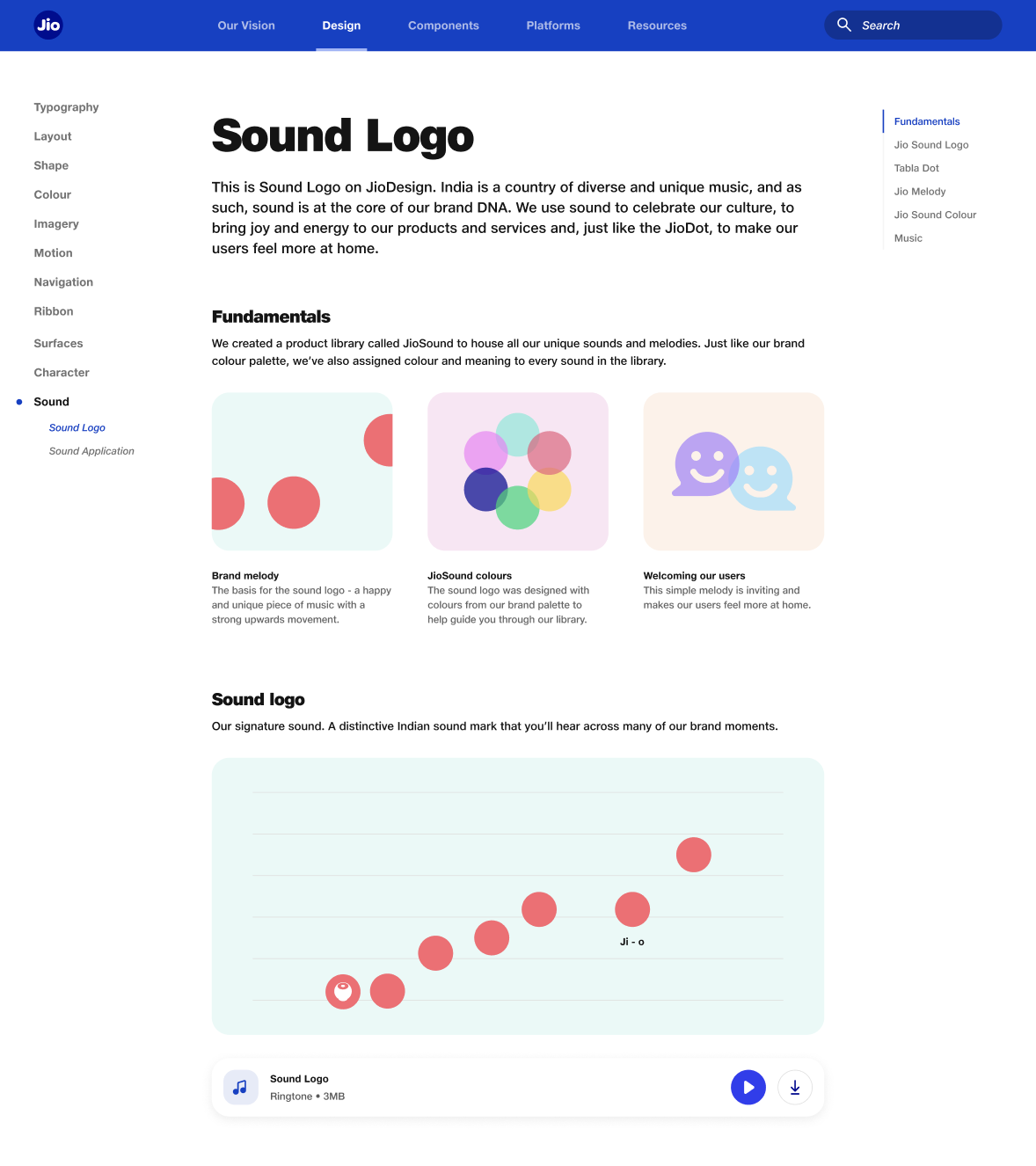
Using UI to add context and cut down on copy

Tone of voice examples across JioPay
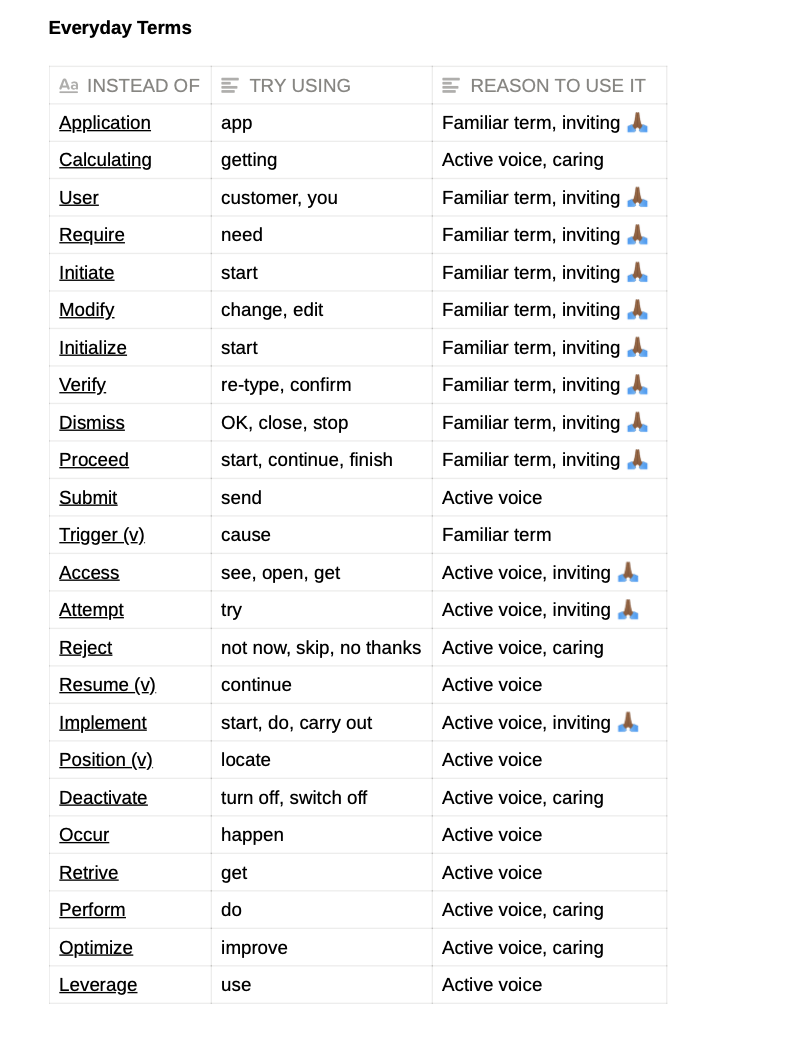
Tone words and how we speak

Revising the JioPay customer service scripts
Research insights
We quickly discovered key insights into customers’ and users’ mental models, which would influence the iterative changes we would need to make:
Through our discovery, research themes started to present themselves and we started to see where the opportunities were to create a better experience for our users.
We discovered that Indian culture is warm and inviting, which is something we wanted to emulate in the experience itself.
Showing off is a part of Indian culture – an air of competitive bravado is key to feeling like you’re getting ahead.
This insight led to the exploration of humour and warmth throughout the design system pages, as well as the JioPay customer comms.
Phrases like “Did you know that you can recharge faster with...”, or “You’ve recharged, now you’re moving faster than ever...” performed well, as did Indian English expressions like, “We’ve sweetened the pot”, and “Jio welcomes you.”

Strategic process
-
We started out by gathering an understanding of the Jio customer and Jio’s employees: who they are, their pain points, needs, and stories.
-
Working with my strategic partner to define Jio’s verbal identity, we landed on a tone that was caring, warm, inspiring and inviting.
-
We developed an internal framework to help simplify and differentiate each stage of the customer journey, and a tone that flexed depending on where the customer is at in their contract.
-
We needed to prioritise a scalable design system, so gathered an agile team of UX designers, engineers, two UX writers and a product manager to kickstart the process.
-
We started by creating an external language system and a familiar, highly consistent design system to help employees understand and use over 30 of Jio’s products.
-
After the initial 3-month sprint, we tested the content both internally and with a series of user tests involving Jio’s employees.
-
Using Google Translate to test copy, writing short and concise user interface copy, and using lots of symbols, icons, and colours to support the content.
Designing content for a mobile-first country
We needed to prioritise a design system was imperative to Jio’s product scalability. We started by creating an external language system and a familiar, highly consistent design system to help employees understand and use over 30 of Jio’s products.
Like most successful design systems, we set up a base structure with simple design templates that includes: Typography, Colors, Iconography, Components, Imagery, Spacing, Content Structure, etc.
These pages would also need to be translated into 12 different Indian scripts, so the language had to be simple and readable.
Due to the tremendous market size of Jio we wanted to create a completely new user experience. We developed a modular and intuitive content structure to maintain consistency across the pages. Each page is functional and content-rich, with contextual support for all components and elements
-

Tone of Voice
Creating a clear tone of voice and verbal language for Jio, with examples of how to speak to customers at every stage of their journey.
-
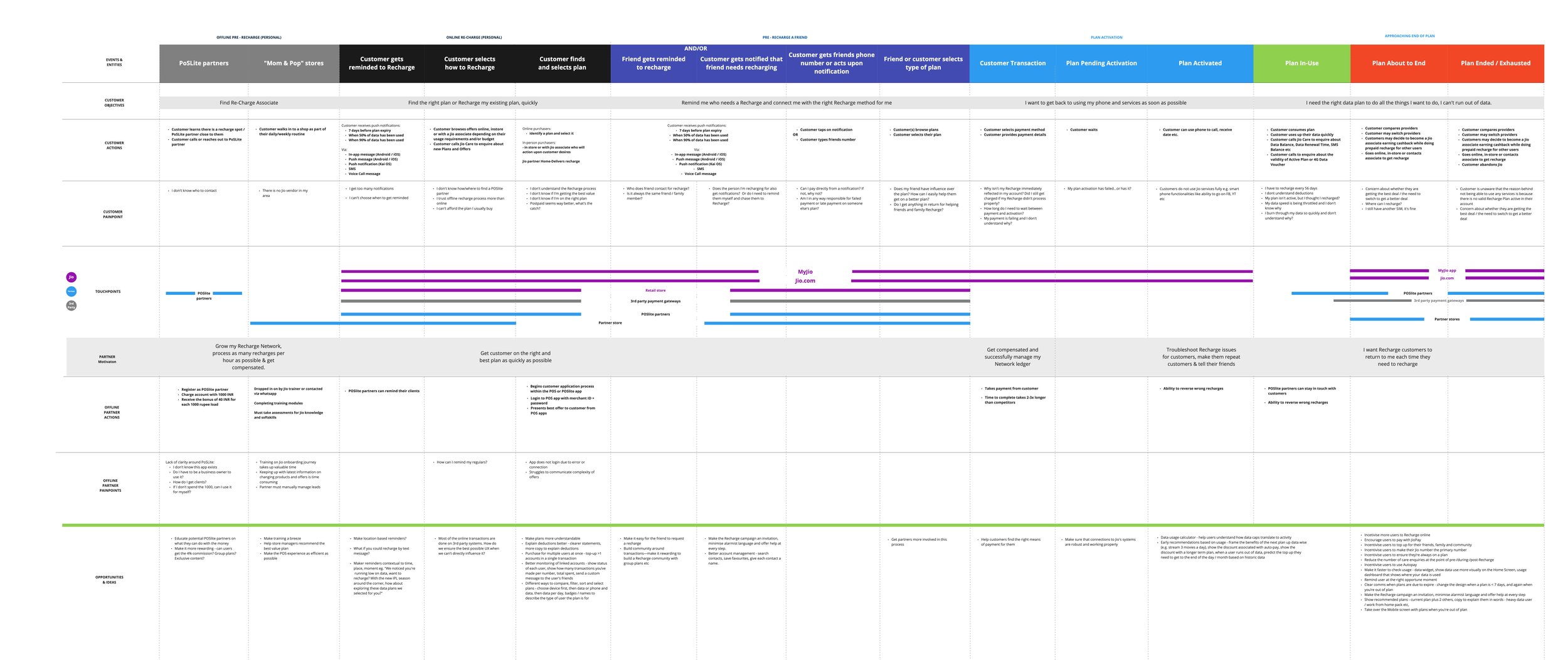
Customer journeys
Developing the customer journeys for JioPay, including messaginf for mobile, WhatsApp, Email, and SMS.
-

A smart, modular design system
Creating a smart, modular 53-page design system, Jio Design, for all Jio users, including developers, designers, and more.
-

The Jio Brand
Clearly explaining the Jio brand and linking to all its assets, how to use font, the Jio Dot logo, and tools for developers.
-

Localisation
There are 12 different scripts in India, from Hindu to Bengali and Punjabi to Urdu. Everything needed to be accounted for in the content production phase.
-

Empathy maps
Creating empathy maps helped understand user and customer needs.
Ready to stand out?
It all starts with a chat.

